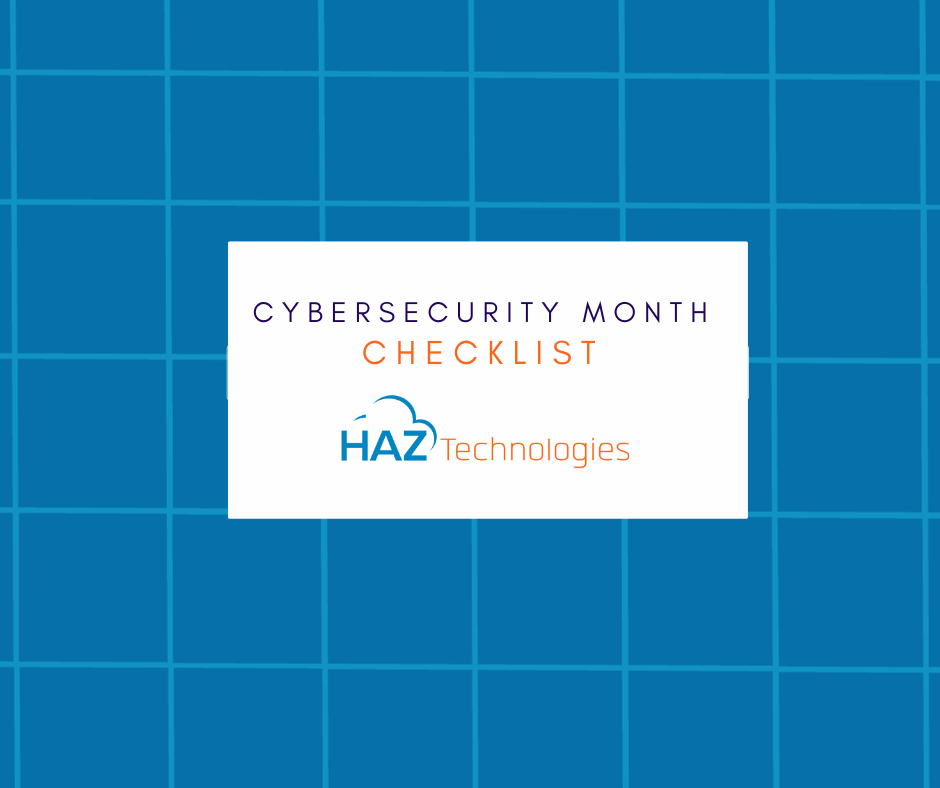At Haz Technologies, we understand the importance of cybersecurity, and we’ve curated a concise yet comprehensive checklist to help you build your online security. Whether you’re an individual, a business owner, or an IT professional, our checklist covers essential aspects of cybersecurity.
- Password Security:
- Change passwords regularly.
- Use strong, unique passwords for each account.
- Enable two-factor authentication (2FA) where possible.
- Software Updates:
- Regularly update operating systems and software.
- Enable automatic updates when available.
- Phishing Awareness:
- Be cautious of unexpected emails or messages.
- Verify sender identities before clicking links or downloading attachments.
- Secure Wi-Fi:
- Change default router passwords.
- Use strong encryption (WPA3) for Wi-Fi networks.
- Disable remote management.
- Data Backup:
- Back up important data regularly.
- Store backups in a secure location.
- Privacy Settings:
- Review and update privacy settings on social media and online accounts.
- Device Security:
- Install reputable antivirus and anti-malware software.
- Enable firewalls on devices.
- Secure Browsing:
- Use HTTPS websites.
- Clear browser cache and cookies regularly.
- Employee Training:
- Conduct cybersecurity awareness training for employees.
- Educate them about social engineering and safe online behavior.
- Incident Response Plan:
- Develop an incident response plan for cybersecurity breaches.
- Test the plan periodically.
- Physical Security:
- Secure physical access to computers and servers.
- Lock sensitive documents and devices.
- Regular Audits:
- Conduct regular cybersecurity audits and assessments.
- Identify vulnerabilities and address them promptly.
- Mobile Device Security:
- Use passcodes or biometrics to lock mobile devices.
- Install security apps and enable remote tracking/wiping.
- IoT Device Security:
- Change default passwords on IoT devices.
- Keep firmware updated.
- Safe Online Shopping:
- Only shop on secure websites.
- Avoid public Wi-Fi for online purchases.
- Social Engineering Awareness:
- Educate yourself and your employees about common social engineering tactics.
- Data Encryption:
- Encrypt sensitive data, both in transit and at rest.
- Third-party Risk Assessment:
- Evaluate the security practices of third-party vendors.
- Report Suspicious Activity:
- Encourage a culture of reporting cybersecurity incidents promptly.
- Continuous Learning:
- Stay updated on the latest cybersecurity threats and best practices.
Disclaimer: Please note that the information provided in this checklist is for informational purposes only and should not be taken as professional advice. Cybersecurity threats are constantly evolving, and the effectiveness of security measures can vary depending on individual circumstances. We recommend consulting with cybersecurity experts or professionals for tailored advice and solutions.

